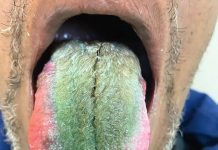Share on PinterestA smartphone app might help scientists identify people with SARS-CoV-2 infections more quickly. Afriandi/Getty ImagesThe prompt diagnosis and treatment of COVID-19 are essential to prevent the continued spread of the SARS-CoV-2 virus.Researchers used a mobile health app to develop a model for predicting COVID-19 from the symptoms that people reported within 3 days of onset.Positive indicator symptoms vary among different groups of people.
Since January 2020, COVID-19 has affected more than 200 million individuals worldwide. The timely detection of SARS-CoV-2 infections could decrease the infection rate and potentially improve patient outcomes.
In a recent study, which appears in The Lancet, researchers achieved an 80% success rate in detecting SARS-CoV-2 infection when using symptoms that individuals had reported within 3 days of onset.
Reporting early symptoms
Containing the spread of the SARS-CoV-2 virus hinges on prompt diagnosis and treatment.
Researchers from King’s College London have now developed a model that could predict infection based on early self-reported symptoms.
In their study, they also looked for combinations of symptoms that would be an early indication of infection.
The study used a large dataset of almost 200,000 participants who self-reported symptoms via the COVID Symptoms Study app. The app is a mobile health application that ZOE developed in London, with scientists from King’s College London in the U.K. and Massachusetts General Hospital in Boston collaborating on the project.
Dr. Claire Steves, one of the study authors and senior clinical lecturer at King’s College London, sees the data that the team collected from the app as a means of uniting patients, healthcare workers, and researchers. In an interview with The Conversation, she says, “Researchers across the country can use this data to map the disease better.”
While other diagnostic models focus on information that researchers collected at the peak of symptoms, this recent model uses the first 3 days of self-reported symptoms.
When optimized, the model may serve as a proxy for clinical diagnosis, indicating the need for either a swab test or self-isolation while awaiting the results of a test.
Characterizing early symptoms
The study identified sets of symptoms that the medical community can use to characterize early signs of infection in different subgroups of the population. The most relevant symptoms indicating early signs of COVID-19 include loss of smell, chest pain, persistent cough, abdominal pain, blisters on the feet, eye soreness, and unusual muscle pain.
Earlier studies included fever and loss of appetite as relevant symptoms for early identification. However, the results from this study indicate that these two symptoms are not relevant to early disease prediction.
The researchers noted some differences between the sexes with regards to reported symptoms. There were also indications of symptom differences between healthcare and nonhealthcare workers and among different age groups.
For example, the symptom of loss of smell was less relevant in those older than 60 years and was not applicable at all in individuals aged 80 years or older.
Dr. Marc Modat, senior lecturer at King’s College London and the last author of the study, says:
“As part of our study, we have been able to identify that the profile of symptoms due to COVID-19 differs from one group to another. This suggests that the criteria to encourage people to get tested should be personalized using individuals’ information, such as age.”
Limitations and strengths of AI
The authors identified several limitations, one of which is related to the age of the participants. As the study used a mobile phone app to collect the data for the study, it is highly probable that the study population was skewed toward younger participants.
Other limitations include the self-reporting aspect of data collection. There may have been instances of people overestimating their symptoms or recollecting the first 3 days of symptoms inaccurately. In addition, all participants were from the U.K., which may have limited the study, as many of the population features could vary strongly among countries.
In an interview with Medical News Today, Dr. Jack O’Horo, a Mayo Clinic infectious disease physician and researcher, recognized the potential usefulness of early symptom reporting via an app.
However, he cautioned: “We must remember that asymptomatic transmission is a significant risk, especially in early illness. This [artificial intelligence] can reasonably be part of a layered protection approach but shouldn’t be the sole protective measure.”
Even though limitations exist, the findings from the study show the value of artificial intelligence in the timely detection of SARS-CoV-2 infections.
“Currently, in the U.K., only a few symptoms are used to recommend self-isolation and further testing,” said Dr. Liane dos Santos Canas, a study author from King’s College London.
“Using a larger number of symptoms and only after a few days of being unwell, using AI, we can better detect [SARS-CoV-2] positive cases. We hope such a method is used to encourage more people to get tested as early as possible to minimize the risk of spread.”
For live updates on the latest developments regarding the novel coronavirus and COVID-19, click here.
Source link : https://www.medicalnewstoday.com/articles/early-covid-19-symptoms-vary-by-age-sex











